ALL ABOUT DIAMONDS FOR MEN
DIAMOND JEWELRY FOR MEN
Diamonds have been prized for centuries for their exceptional hardness and dazzling brilliance. Historically, diamond jewelry for men was associated with wealth and status, worn by royalty and aristocracy. The diamond engagement ring tradition gained prominence in the 20th century, cementing the diamond's enduring symbol of love and commitment.
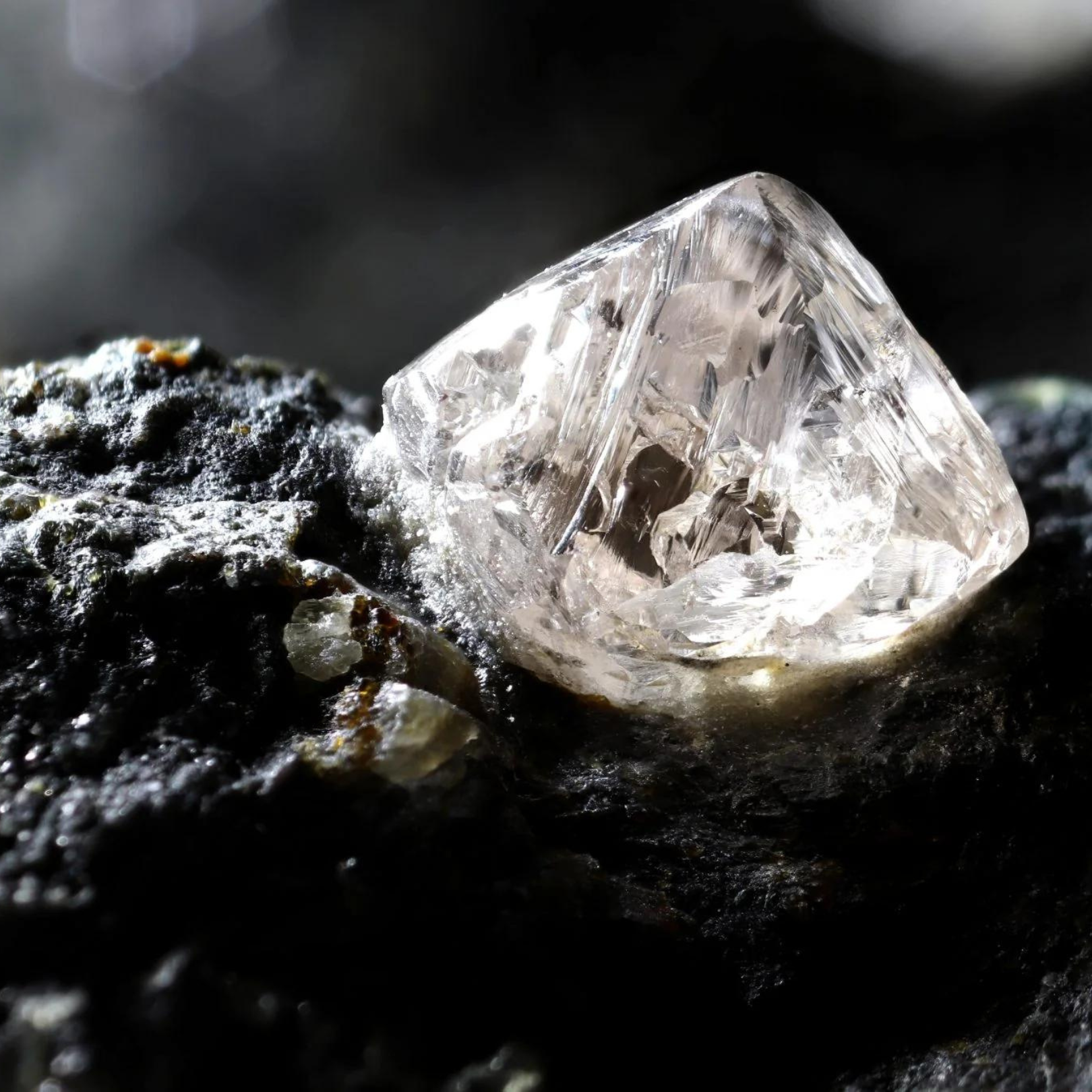
BIRTH OF A DIAMOND
FORMATION
Diamonds form deep within the Earth's mantle, where high pressure and temperature conditions are ideal for their crystallization. The process of diamond formation involves the following steps:
- Carbon Source: The primary element for diamond formation is carbon. Carbon atoms need to be present in sufficient quantities, typically derived from organic material buried deep within the Earth, such as carbon-rich minerals or organic debris.
- High Pressure: Diamonds form under extremely high pressure, typically at depths of 140 to 190 kilometers (87 to 118 miles) below the Earth's surface. The pressure at these depths is equivalent to thousands of times the atmospheric pressure at sea level.
- High Temperature: Along with high pressure, high temperatures are necessary for diamond formation. The temperatures can reach over 1,200 degrees Celsius (2,200 degrees Fahrenheit) or higher in the mantle.
- Volcanic Activity: Diamonds are brought closer to the Earth's surface through volcanic eruptions. Kimberlite and lamproite are two types of volcanic rocks known to carry diamonds to the surface. The volcanic eruption acts as a conduit, transporting diamonds from the mantle to the Earth's crust.
- Cooling: Once brought to the surface, diamonds cool and solidify. The rapid ascent helps preserve the diamond structure, preventing the transformation back into graphite, which is the stable form of carbon at the Earth's surface.
- Kimberlite Pipes: Diamonds are often found in Kimberlite pipes, vertical tubes of volcanic rock that originated from deep within the Earth. The study of these pipes is crucial for diamond exploration and mining.
The entire process from diamond formation to reaching the Earth's surface is highly complex and can take millions to billions of years. The conditions necessary for diamond formation are extreme and not commonly found, making diamonds relatively rare in comparison to other minerals. The natural diamonds available in the diamonds for men market today are a result of mining these precious gemstones from the Earth's crust.
Aequa & Co. Diamond Jewelry For Men Uses Natural Diamonds Only.
NOT ALL DIAMONDS SPARKLE THE SAME
Natural and synthetic categories of diamonds.
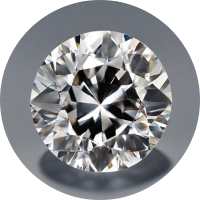
NATURAL
Origin: Natural diamonds are formed deep within the Earth's mantle over millions of years. They are mined from diamond-rich deposits.
Composition: Natural diamonds are made of carbon atoms arranged in a crystal lattice structure. They are entirely natural and have unique characteristics, including inclusions and blemishes.
Hardness: Natural diamonds are the hardest known natural material and rank as a 10 on the Mohs scale. They are highly resistant to scratching and wear.
Brilliance: Natural diamonds are known for their exceptional brilliance and sparkle, created by the way they interact with light.
Value: Natural diamonds are typically more expensive than lab-grown diamonds and CZ due to their rarity, natural beauty, and demand. The premier choice of diamond jewelry for men.

LAB-GROWN
Origin: Lab-grown diamonds, also known as synthetic or cultured diamonds, are created in a laboratory setting using advanced technology. They have the same chemical composition as natural diamonds.
Composition: Lab-grown diamonds are made of carbon atoms arranged in a crystal lattice structure, just like natural diamonds. They are not simulants but actual diamonds.
Hardness: Lab-grown diamonds have the same level of hardness as natural diamonds, ranking as a 10 on the Mohs scale.
Brilliance: Lab-grown diamonds exhibit the same optical and physical properties as natural diamonds, resulting in comparable brilliance and sparkle.
Value: Lab-grown diamonds are generally more affordable than natural diamond jewelry for men, making them an attractive option for ethical and budget-conscious buyers.
Ethical and Environmental Considerations: Lab-grown diamonds are often viewed as a more ethical and environmentally friendly choice because they do not involve mining, which can have ecological and ethical implications.

CUBIC ZIRCONIA
Origin: CZ is a synthetic gemstone created in a laboratory. It is not a naturally occurring mineral and does not come from the Earth.
Composition: CZ is composed of zirconium dioxide crystals and is entirely man-made. It is a diamond simulant designed to mimic the visual characteristics of natural diamonds.
Hardness: CZ is softer than natural and lab-grown diamonds. It ranks 8-8.5 on the Mohs scale of mineral hardness, which means it is more prone to scratching and wear.
Brilliance: CZ has a high refractive index and can be very sparkly, often resembling the appearance of a well-cut diamond.
Affordability: CZ is significantly more affordable than natural and lab-grown diamonds, making it a popular choice for costume and fashion jewelry, but not so for luxury diamond jewelry for men.
Durability: Due to its lower hardness, CZ is less durable and more prone to damage and scratches over time.
FOUR C'S
Cut, Color, Clarity, and Carat Weight, according to the The Gemological Institute of America (GIA).
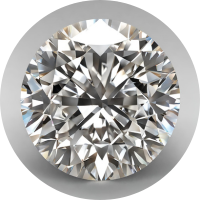
CUT
The cut grade assesses how well a diamond has been cut and shaped. It considers factors like brightness, fire, and scintillation, which are the attributes of a diamond's interaction with light.
GIA's cut grade ranges from Excellent to Poor, with specific criteria for each grade.

COLOR
The color grade evaluates the absence of color in a diamond.
GIA uses a letter scale from D (colorless) to Z (light yellow or brown). D-F diamonds are considered colorless, while G-J diamonds are near-colorless. Beyond J, the diamonds exhibit more noticeable color.

CLARITY
Clarity grade measures the presence of internal and external flaws or inclusions in a diamond. GIA clarity grades range from Flawless/Internally Flawless, to VVS1 & VVS2, all the way to I1, I2, & I3.
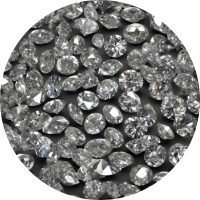
CARAT WEIGHT
Carat weight is a measure of a diamond's size. One carat is equivalent to 200 milligrams. Larger diamonds are generally more valuable, but the other factors (cut, color, and clarity) also play a significant role in determining a diamond's worth.
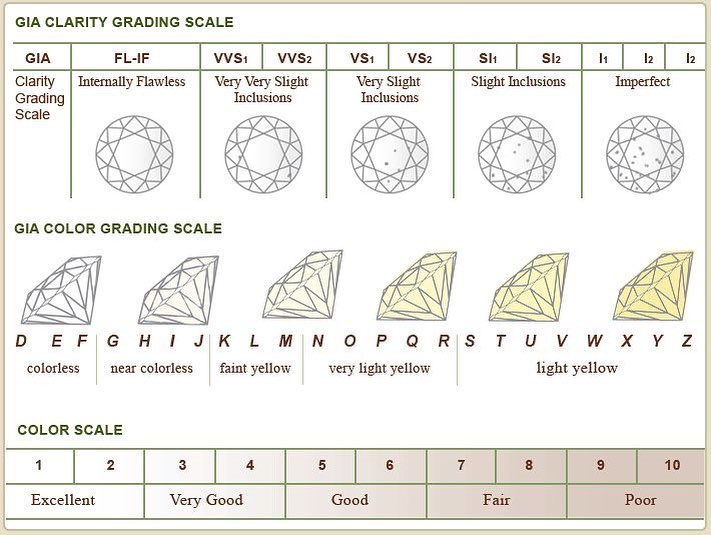
Diagram Credit: The Gemological Institute of America.
https://4cs.gia.edu/en-us/blog/gia-diamond-grading-scales/
Aequa & Co. Diamond Jewelry For Men Uses Natural Diamonds Only.
































































